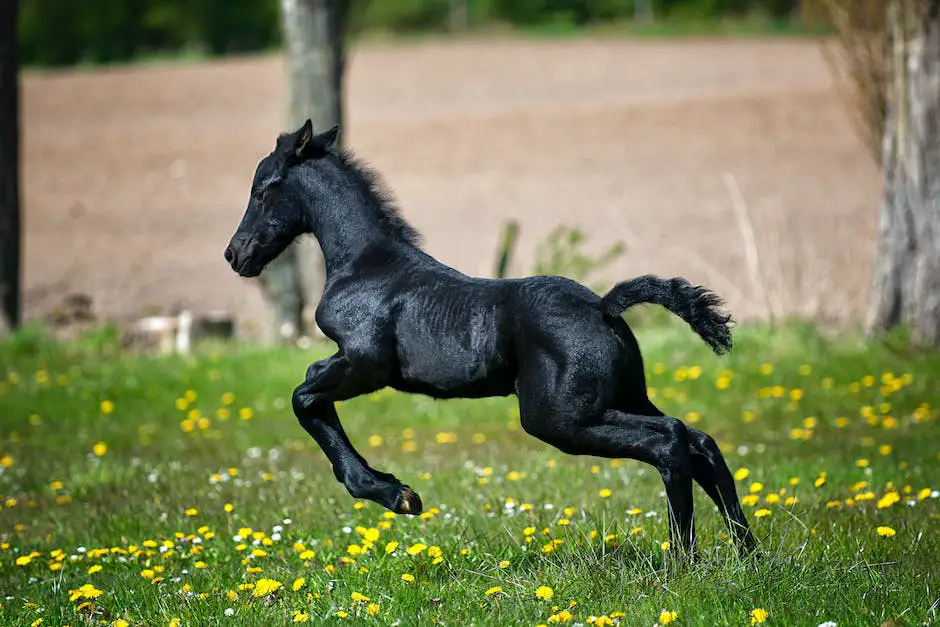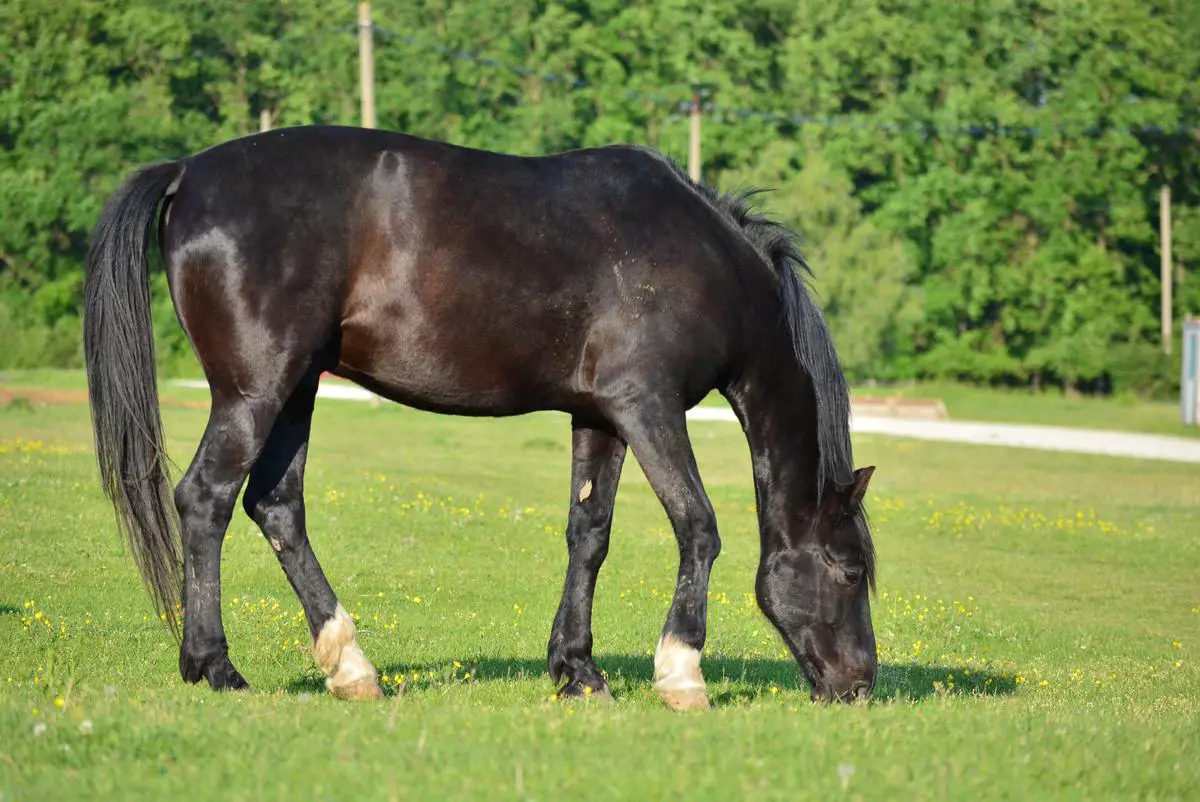In the world of equestrian sports and equine care, horses are more than just animals – they are companions, athletes, and a testament to the beautiful diversity that exists within a single species. The ‘cold-blooded’ horse, often misunderstood due to its name, stands as a representation of this rich variety. Our journey unfolds with the untangling of the enigma surrounding this unique type of horse, as we delve into its biological makeup, origin, and significance. Expanding on this base, we will step into the field of their dietary habits, laying down the integral principles of feeding these horses. This will lead us toward the significant step of customizing a feeding regime, giving weightage to myriad factors like size, weight, activity and health status of the horse. Finally, we will tread the enlightening path of latest scientific research related to feeding strategies of cold-blooded horses, providing a robust, evidence-backed viewpoint that will serve to bust myths, solidify facts, and offer meaningful implications for horse owners and the equine industry.
Table of Contents (Horspedia)
Understanding Cold-Blooded Horses
Exploring the Phenomenon of Cold-Blooded Horses: Nature and Characteristics
At the very heart of equine studies lies horses; majestic creatures rising in the hierarchy of domesticated animals due to their vibrant synthesis of power, speed, and grace. Among the diverse taxa of horses, significant attention is directed towards a unique category coined “cold-blooded horses.” These creatures comprise a segment of the equine species that exhibit particular characteristics and behaviors, distinguishing them from other members of their kind.
Cold-blooded horses, contrary to potential assumptions from the term, do not signify any discrepancy in their blood temperature, unlike the classic distinguisher in reptiles, amphibians, and mammals. Instead, the term represents a figurative rather than literal classification in horse culture, differentiating in breed size, origin, and work type.
These horses are typically larger in size and frame compared to their counterparts, leading to the designation of “heavy horses” in some regions. Featuring robust structures and well-muscled bodies, they are extensively versed in heavy manual labor and have an illustrious history in farm work and transportation. An example of a classic cold-blooded horse is the Belgian Draft, known for their incredible strength and stamina.
The temperament of these horses is often described as calm, patient, and good-natured, thereby reflecting the other meaning of “cold-blooded.” They are amenable to training due to their steady nature and are highly appreciated for their reliability. These horses are steadfast, undeterred by strenuous tasks, and maintain an admirable work ethic, further consolidating their suitability for labor-intensive work arenas.
Historically, cold-blooded horses draw their lineage from Europe, especially from regions characterized by a climate that leans towards the cooler side. Their genetic configuration has adapted them to thrive in these lower temperature environments, lending to their honorific moniker. Breeds like the Shire, Clydesdale, and Suffolk Punch all harken from these colder European regions, featuring heavily in medieval history as the preferred horses for knights due to their significant size and strength.
It is important, however, to recognize exceptions to these general characteristics. The vast diversity of horses results in a spectrum of variations within this classification. While all cold-blooded horses maintain significant size and strength, their appearances, abilities, and temperaments can vary based on the specific breed, upbringing, and training.
Indeed, the realm of cold-blooded horses is as fascinating as it is complex, a distinctive exploration into the exceptional versatility and diversity of the equine species. As we continue to probe the comprehensive world of these majestic creatures, we acknowledge the immensity of the knowledge that remains to be discovered and appreciate the remarkable intricacies that constitute the nature of cold-blooded horses.

Dietary habits of Cold-Blooded Horses
The Dietary Requirements of Cold-Blooded Horses
The diet of cold-blooded horse breeds is a significant aspect of maintaining their health and performance. As these equine giants are often put to work due to their power and calm temperament, optimal nutrition is of utmost importance. There’s no one-size-fits-all diet plan, the needs vary based on factors like age, work intensity, and individual health status, thereby making dietary management a meticulous and crucial task for caretakers.
Forage, primarily in the form of hay and grass, is the cornerstone of a cold-blooded horse’s diet, providing the bulk of their nutrition. Not only does this food source satisfy their natural grazing instinct, it also provides necessary fiber which is pivotal for maintaining gut health. It is estimated that these horses should consume about 1.5-2% of their body weight in forage each day. However, it’s worth noting that the quality of the forage plays a crucial role. Hay containing a balance of legume and grass is typically ideal, offering appropriate levels of protein, vitamins, and minerals.
Additionally, cereal grains like oats, corn, or barley, while energy-dense, should be fed in careful moderation as they are more difficult for these horses to digest. These grains often cater to the increased energy demands when cold-blooded horses are involved in strenuous physical work but are not without their own risks. An excessive intake might lead to conditions like stomach ulcers or laminitis, hence the need for vigilance.
The incorporation of commercial horse feeds can also be a beneficial strategy for those with specific nutritional needs. These feeds, meticulously crafted by equine nutritionists, often contain the right balance of nutrients while also accommodating for factors like age, physique, and workload.
Given the significant size of the cold-blooded horse, precise mineral and vitamin supplementation is imperative. Especially since mineral deficiencies or superfluities could have detrimental effects on their health. For instance, it’s important to maintain an optimal calcium to phosphorus ratio in the diet – an imbalance could cause conditions like Big Head or Stringhalt, impairing their overall mobility and performance.
Moreover, cold-blooded horses have a propensity for obesity and metabolic disorders such as Equine Metabolic Syndrome, making it even more crucial to monitor their diet closely. Measuring body condition scores regularly can help keep tabs on their nutritional status, allowing for prompt dietary adjustments when needed.
In conclusion, the dietary management of cold-blooded horses is an intricate task that hinges on balancing their nutritional needs against their propensity for certain health issues. Ensuring they consume the right kind and quantity of food is vital to their health, longevity, and performance. Solid nutritional strategies, backed by comprehensive veterinary guidance, can greatly improve the wellbeing of these magnificent, hardworking creatures.

Customized feeding regime
Entering the depths of tailored feeding for cold-blooded horses paves the way towards more efficient equine care practices. Customizing and optimizing feeding stratagems for these noble beasts adds significant value to their health, work productivity, and longevity. It is a process that begins with understanding their unique nutritional requirements.
As horses, they biologically rely on forage as the centerpiece of their diet. The roughage–hay, grass, and the likes–aid in maintaining their gut health and provide the necessary fibers for their digestive process. The ideal forage combines legumes and grasses in proper proportions to supply high-quality proteins, energy sources, and other beneficial nutrients.
However, the dietary needs of cold-blooded horses go beyond forage, which brings us to industry-grade, commercial horse feeds. Designed for specific nutritional requirements, these compilations are fortified with essential vitamins and minerals, offering a comprehensive and balanced diet.
When integrating commercial feeds, it must be noted that a transition to different food types should be gradual to avoid digestive disruptions. Equally crucial is moderation in introducing grains into the diet, as cold-blooded horses tend to possess an inherently sensitive digestive system. Over-feeding grains may result in complications like stomach ulcers or laminitis, detrimental to equine health.
Observational vigilance is fundamental in customizing and optimizing a feeding regime. Regular and methodical monitoring of body condition scores allows for timely dietary adjustments. This proactive approach reduces their propensity for obesity and metabolic disorders, issues cold-blooded horses are somewhat susceptible to.
Cold-blooded horses, with their heavyweight and calm demeanor, have unique nutritional demands, often requiring more attention to mineral balances. For instance, optimal calcium to phosphorus ratio bears consequential impact on their health and performance. A lopsided ratio may lead to complications in skeleton or teeth development, and moreover, poor performance.
Supplementing their feed based on individual needs contributes to bridging the gap of nutritional deficits. This balancing act of fulfilling nutritional needs alongside aligning with health issues is of utmost significance. Therefore, while customizing the diet, the horse’s age, health status, and work intensity must be steadfastly factored in.
It is apparent that feeding cold-blooded horses is an ongoing scientific endeavor, an art that requires continuous learning, adjustments, and adaption. Yet, the endeavor is undoubtedly rewarding in terms of promoting superior wellbeing and performance of these exceptional equine wonders.

Scientific Research on Cold-Blooded Horses’ Feeding
Given our understanding of the nature of cold-blooded horses and their physical properties, it’s imperative to focus on the optimal feeding strategies. Intensive research in the field of equine nutrition has revealed just how critical a well-tailored diet is for these horses.
Recent findings encourage a greater focus on the variety and timing of feeding. Diversity in the diet is essential, including a thoughtful blend of forage, commercial horse feeds, and at times, cereal grains. However, timing plays an equally pivotal role. Studies suggest mistimed feeding can put a burden on the horse’s digestive system, having far-reaching effects on its overall health and performance.
Cold-blooded horses have a unique metabolism, compared to other breeds, which needs to be addressed in their diet. They tend to assimilate nutrients differently, and feeding them in alignment with their metabolic rhythm improves digestion and prevents disorders. Researchers thus propose smaller, more frequent meals spread throughout the day, as opposed to fewer, larger meals. A shift towards this feeding strategy has proven effective in reducing the risk of colic and gastric ulcers.
Adding to this, research increasingly corroborates the intuition that hydration is fundamental. A seemingly simple act of drinking water plays a vital role in a horse’s digestive process. An adult cold-blooded horse requires around 40-60 liters of water per day, depending on its size and the intensity of work carried out. Insufficient water intake can lead to dehydration and constipation, while adequate hydration aids digestion and nutrient absorption.
Speaking of water, research also emphasizes the difference between water content in the horse’s diet. While hay and sole grain diets have a low water content, fresh grass or soaked feeds ensure higher water intake. This has significant implications for the horse’s gut health, potentially reducing the chance of impactions.
Furthermore, studies underscore the importance of maintaining an optimal balance of omega-3 and omega-6 fatty acids in a cold-blooded horse’s diet. Traditionally, horse diets have been rich in omega-6, but recent findings encourage a higher omega-3 intake, attributed to its anti-inflammatory properties. Incorporating flaxseed or fish oil in the diet is one practical route to meeting this new recommendation.
Lastly, emerging research suggests a promising role for nutraceuticals in a cold-blooded horse’s diet. These are substances found in certain feed types that provide medical or health benefits, in addition to their standard nutritional value. This can include glucosamine for joint health, probiotics for gut health, and antioxidants to fight cellular damage. While the efficacy of these substances can often depend on the individual horse, their inclusion marks an exciting frontier in the nutrition of cold-blooded horses.
A culmination of extensive research and diligent observation, these findings ultimately attest to the intricacies of feeding cold-blooded horses. It’s a complex interplay of numerous variables, each crucial to the horse’s health and performance. And as understanding of the nutritional needs of these horses deepens, so does the prospect of fostering healthier, more robust horses.

Photo by oblacko_oorta on Unsplash
Through this immersive exploration, we have journeyed into the complex, intriguing world of cold-blooded horses. Along the way, we have enhanced our understanding of their unique physique, discerned the wisdom in their preferred diet, and learned how to create a balanced, customized feeding regime. Equally, our understanding of the scientific research surrounding their feeding habits has deepened, revealing factual data that empowers us to make informed decisions for optimal care of these magnificent creatures. Amidst the multitude of horse breeds each possessing distinct attributes, the so-called ‘cold-blooded’ horses have emerged with an identity as remarkable as their warm and hot-blooded counterparts. As responsible horse enthusiasts or horse owners, the ensuing task after gaining such wholesome insights, is to incorporate them thoughtfully into our equine care practices, ensuring our cold-blooded friends continue to thrive and flourish in their unique might and grandeur.

